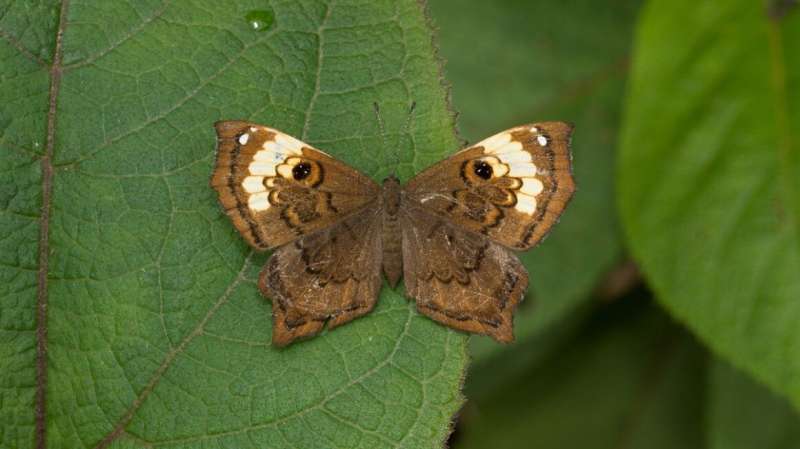Almost 200 unique butterflies live only in Colombia and could be at risk of being lost forever

Almost 200 unique species of butterflies live only in Colombia, accounting for 20% of all butterfly species, and they might be at risk. This means that one in five of the world's known butterfly species could be protected in Colombia's territory. The first ever list and identification guide for the endemic species has been just published after almost two centuries of butterfly studies in the country. The bilingual book (English and Spanish) can be downloaded for free from the Natural History Museum website.
The women-led team of authors comprises Dr. Blanca Huertas, a scientist at the Natural History Museum, Yenny Correa Carmona biologist from Universidad de Antioquia in Colombia and Rutherford grant recipient and Jean Francois Le Crom, butterfly expert. The project follows an international collaboration between the Colombian Government's board of Tourism, ProColombia, and the Natural History Museum in London, UK.
Many species will be seen for the first time in the book with 500 full color pictures and facts about some of the rarest, precious, and most threatened butterflies in the country. To name a few, the book features a yellow butterfly species that was in solitude for almost one hundred years before its female mate was found, a species that has only been collected once in almost 50 years and even a species named after Satan.
Colombia is one of the most diverse countries in the world and the authors of the book hope to encourage more people to protect Colombia's vast butterfly fauna, including international visitors. With improved security following the country's peace accord and the growth in nature appreciation globally, ecotourism experiences are at the top of many travelers' priority lists. However, climate change and land conversion are threatening many forests in the mountains of Colombia.
Dr. Blanca Huertas, Senior Curator of Lepidoptera at the Natural History Museum, says: "Now knowing which butterfly species have special and limited habitats in Colombia, we hope that the general public engage with their conservation, that scientists can prioritize further studies and governments can protect them. We are letting the world know about the unique treasures of Colombia."
Jose R. Puyana, ProColombia's regional director for Europe said: "From the home to a fifth of the world's entire butterfly population, ProColombia is delighted to support the important work that scientists are doing to identify and celebrate Colombia's unique butterflies. Through partnering with the Natural History Museum, we continue to showcase our precious wildlife and shine a light on Colombia as perhaps the most biodiverse country in the world."
Key facts:
- The book reveals photos and unknown facts concerning the almost 200 butterflies that live only in Colombia. If lost, they will be lost forever.
- A yellow butterfly featured in the book is an icon of the famous Nobel book writer Gabriel Garcia Marquez's One Hundred Years of Solitude book.
- Colombia has almost as many butterflies as Africa (4,000 species) and almost six times than the entire European continent (500 species).
- Significant improvements in the security of Colombia have led to a new phenomenon of ecotourism, meaning butterflies have potential for increased protection.
- The Paramos area of the Colombian mountains is the most threatened area and is a vital habitat to the endemic butterfly species.
No comments:
Post a Comment